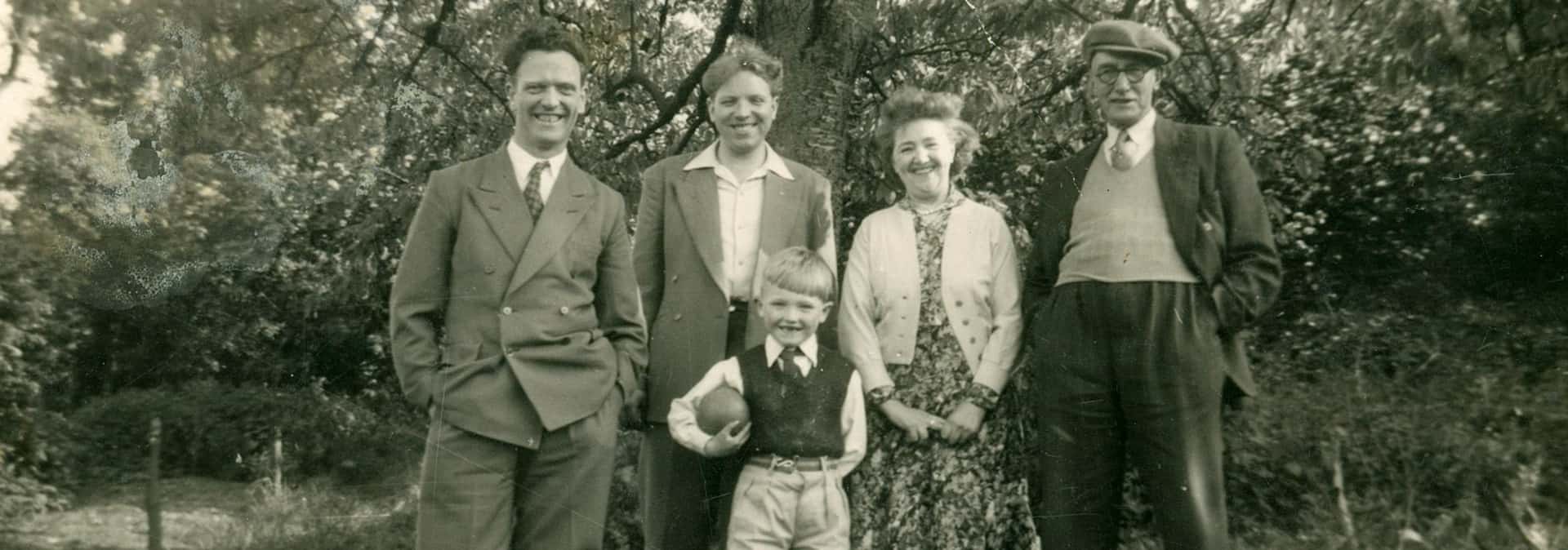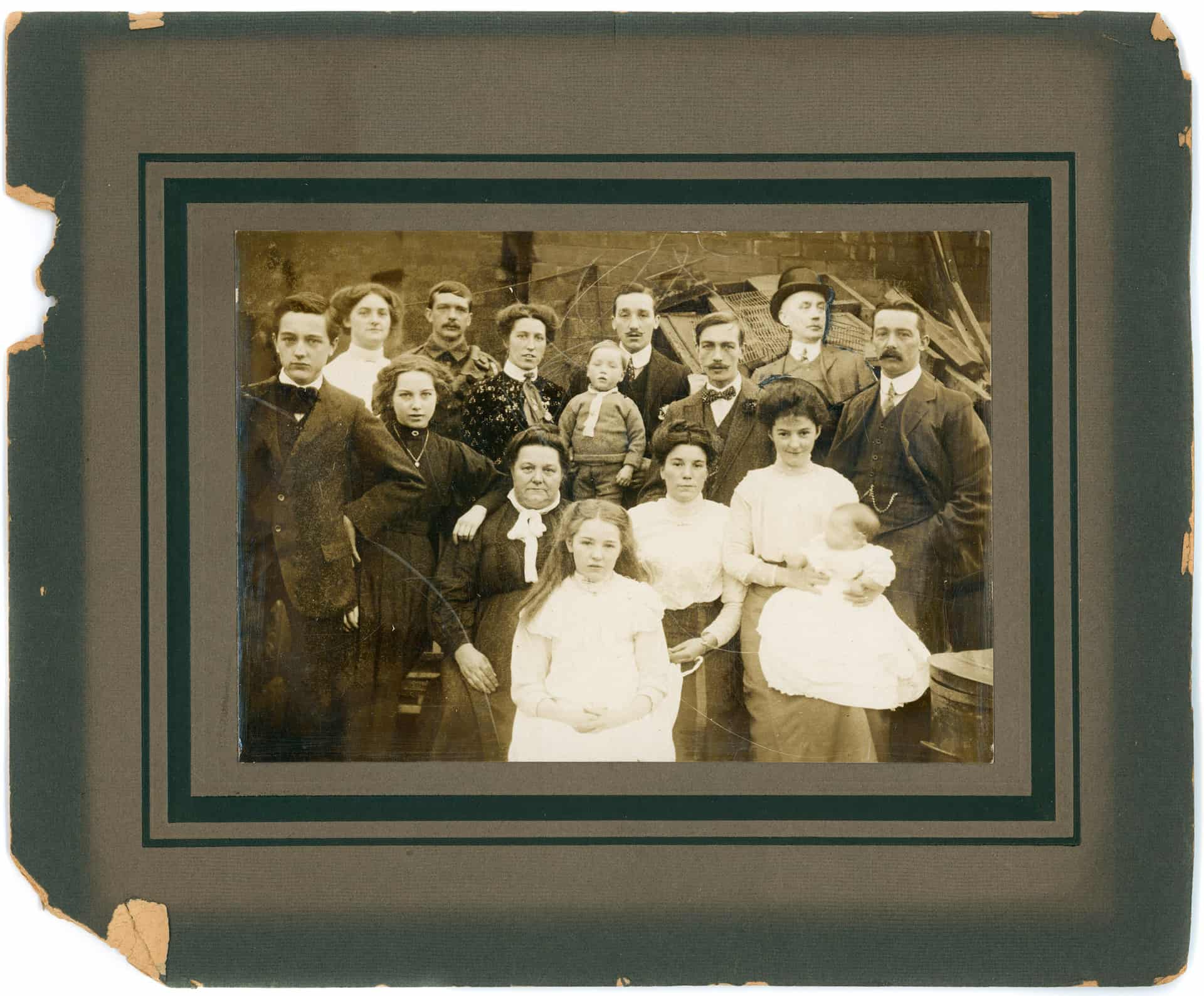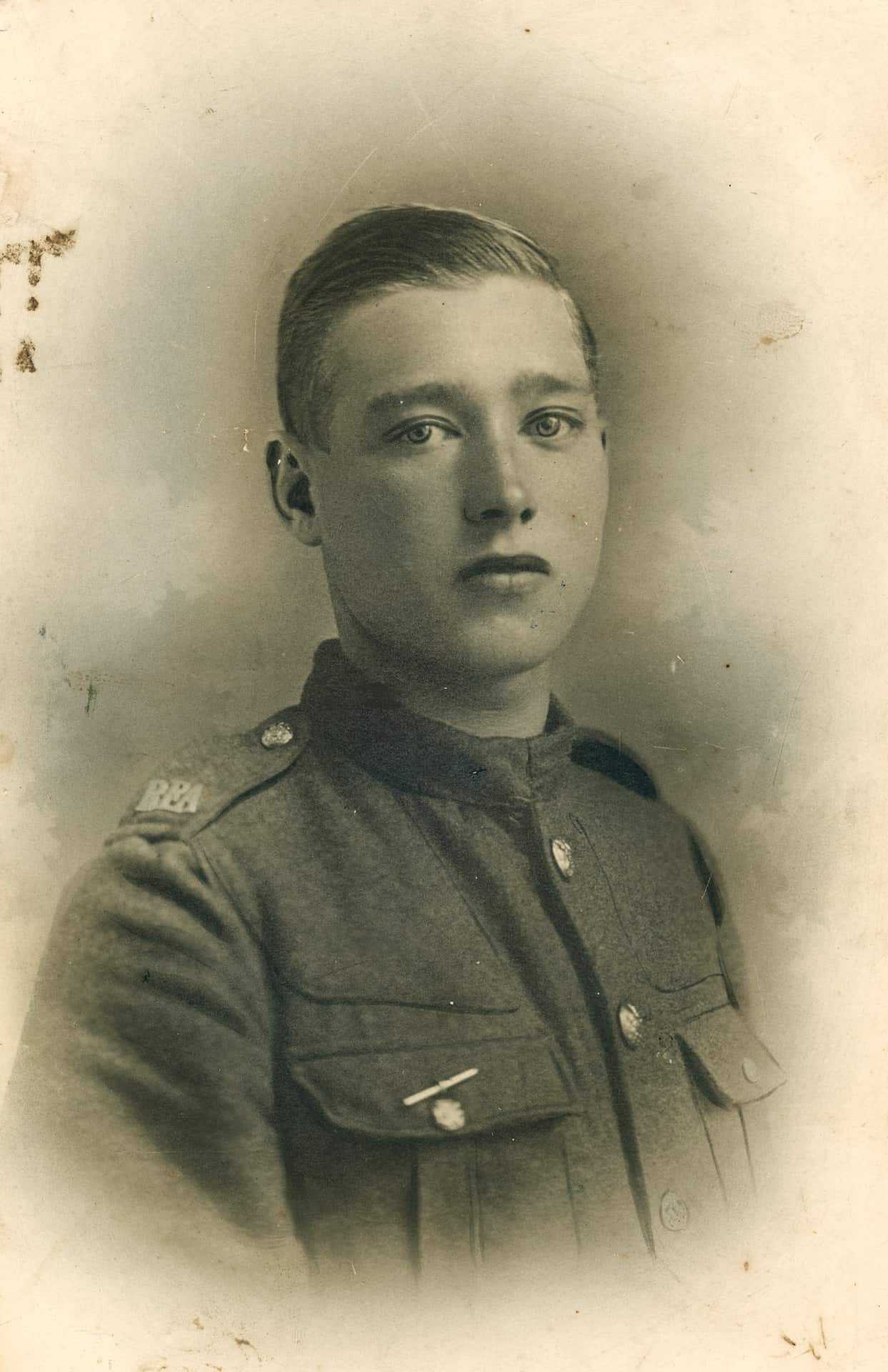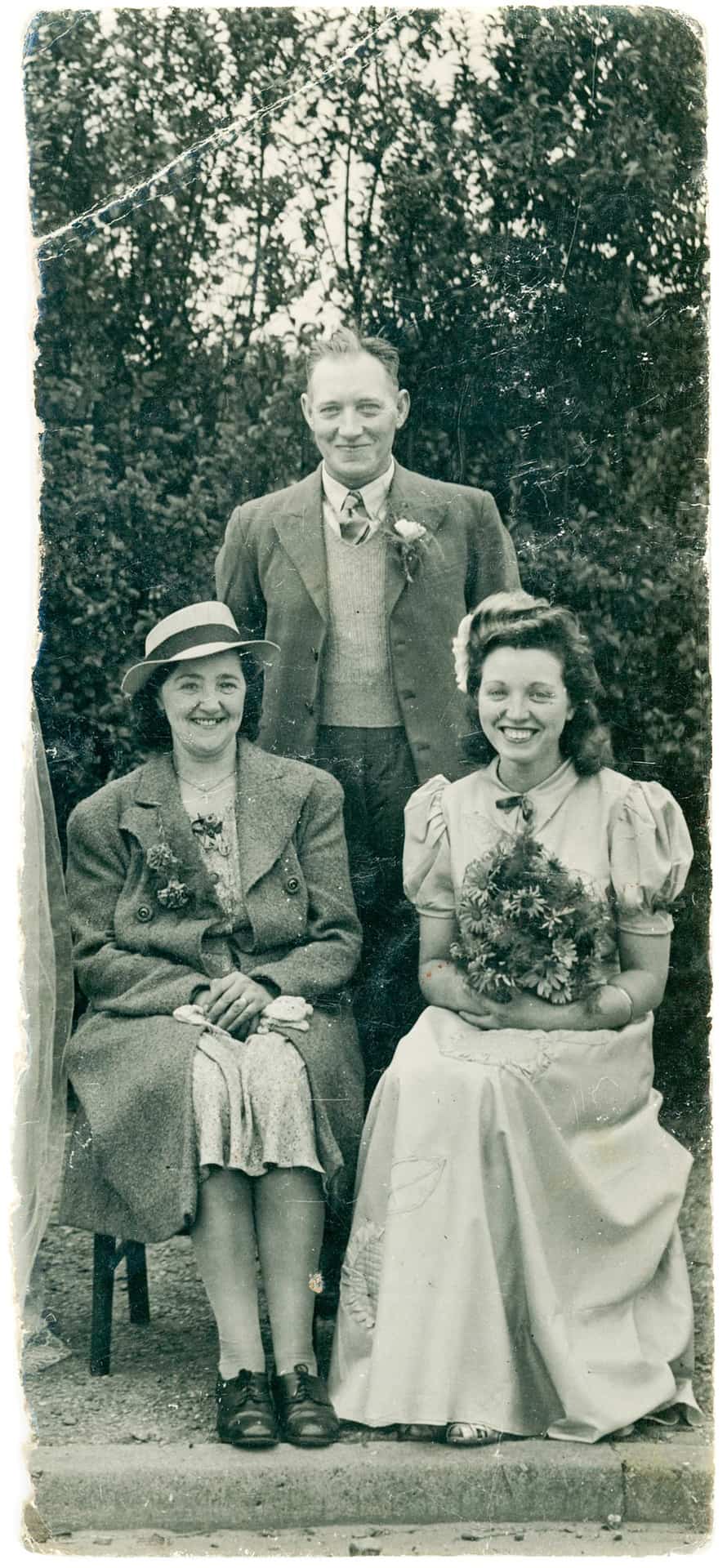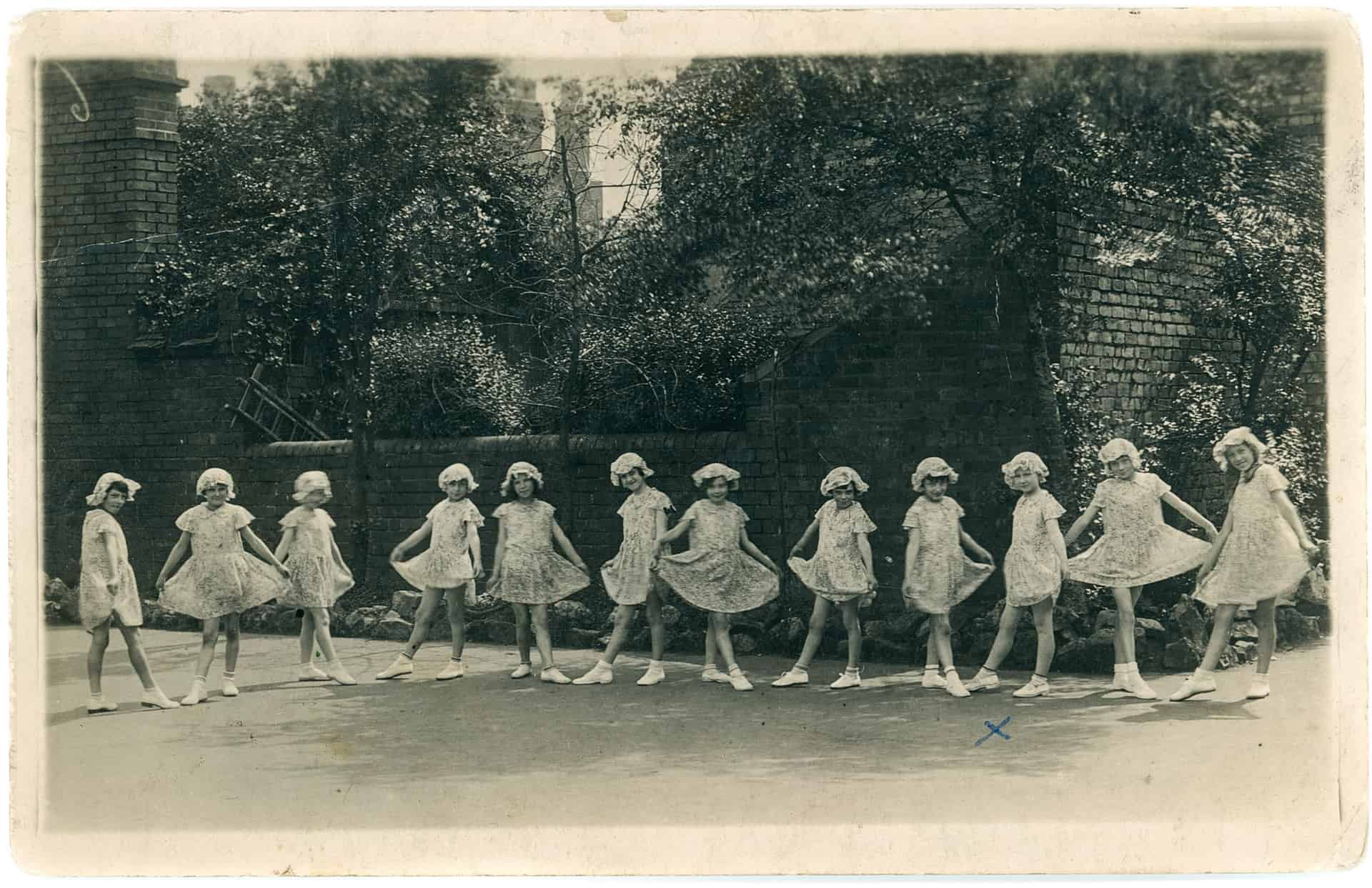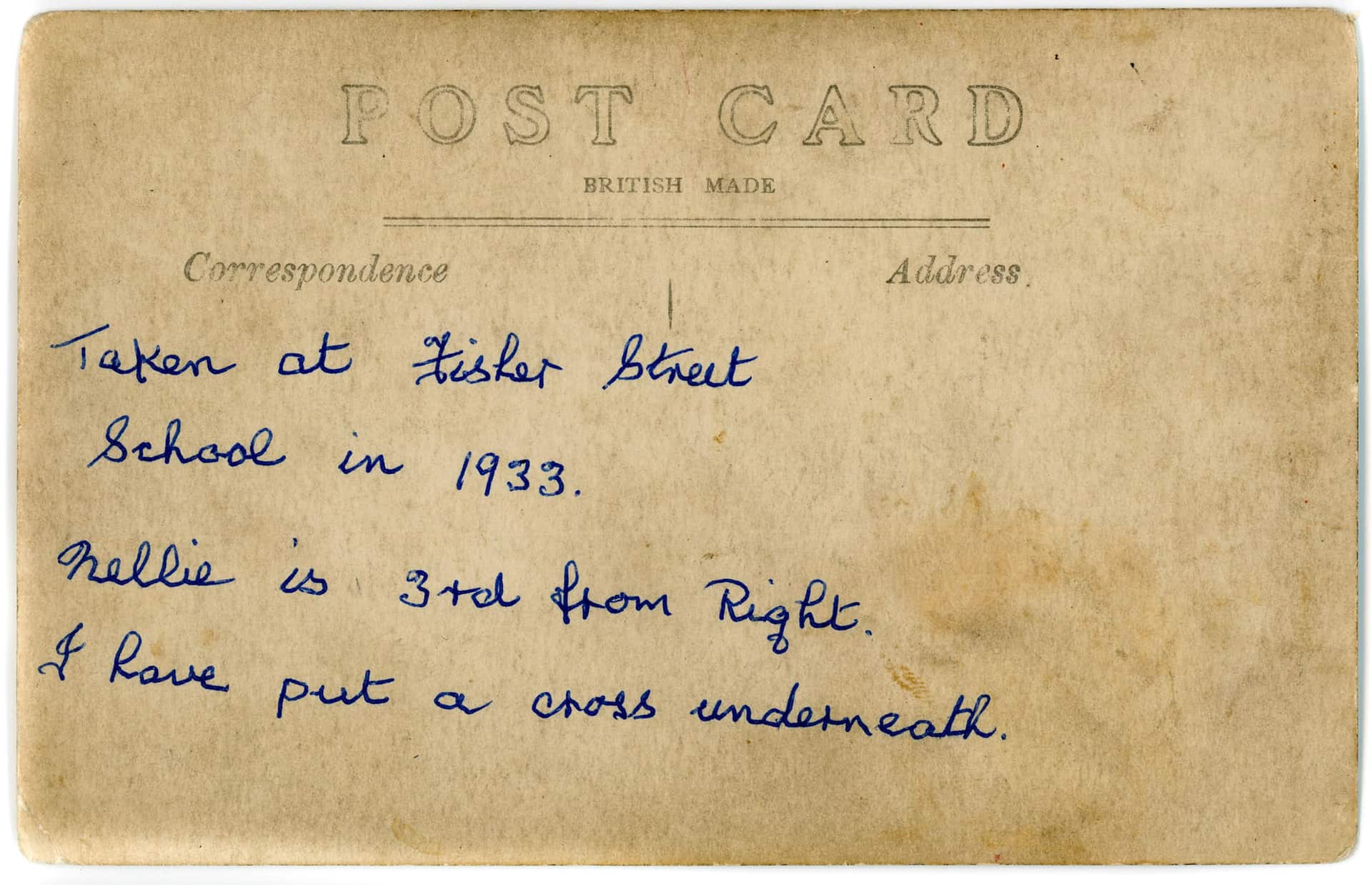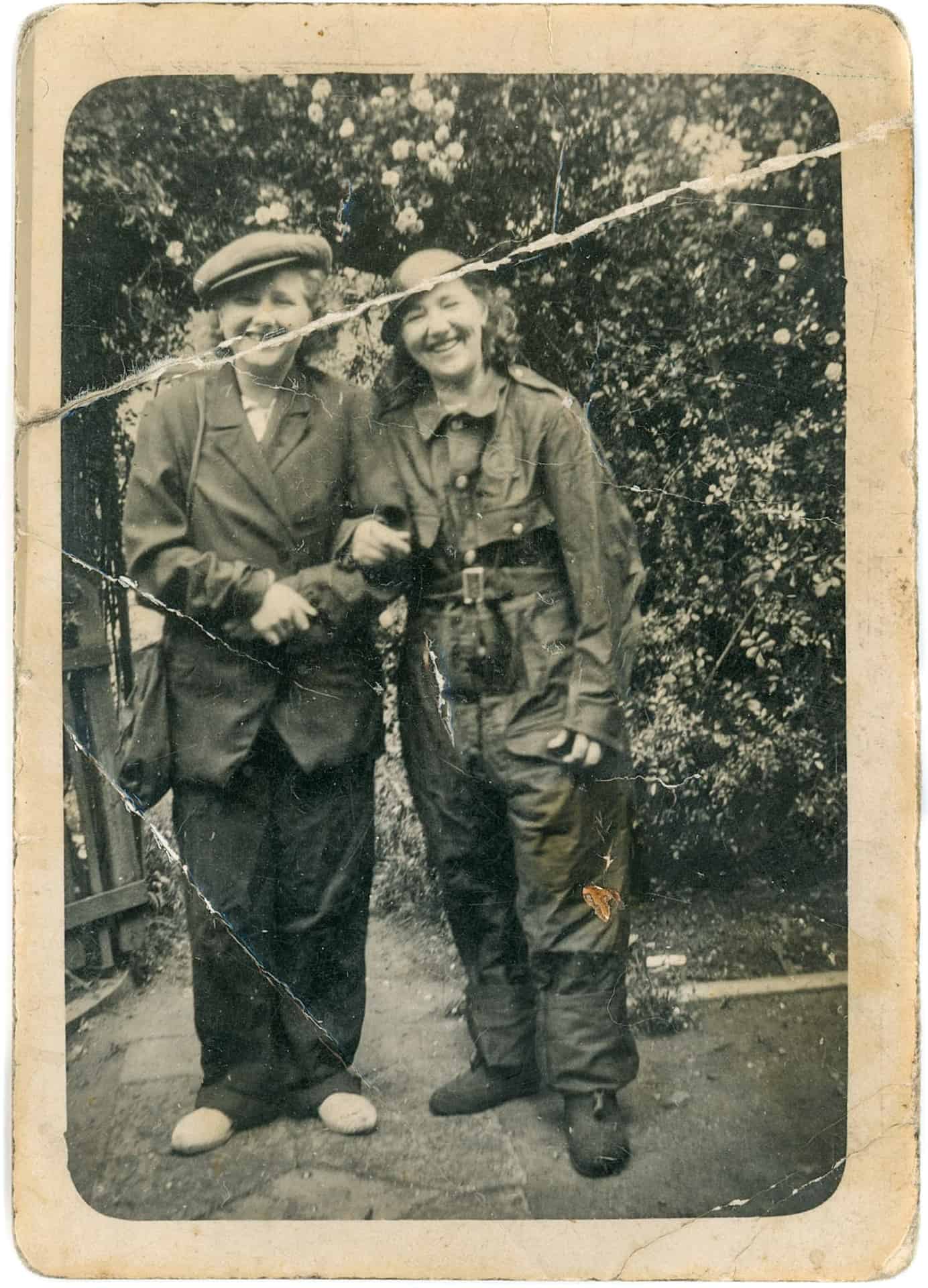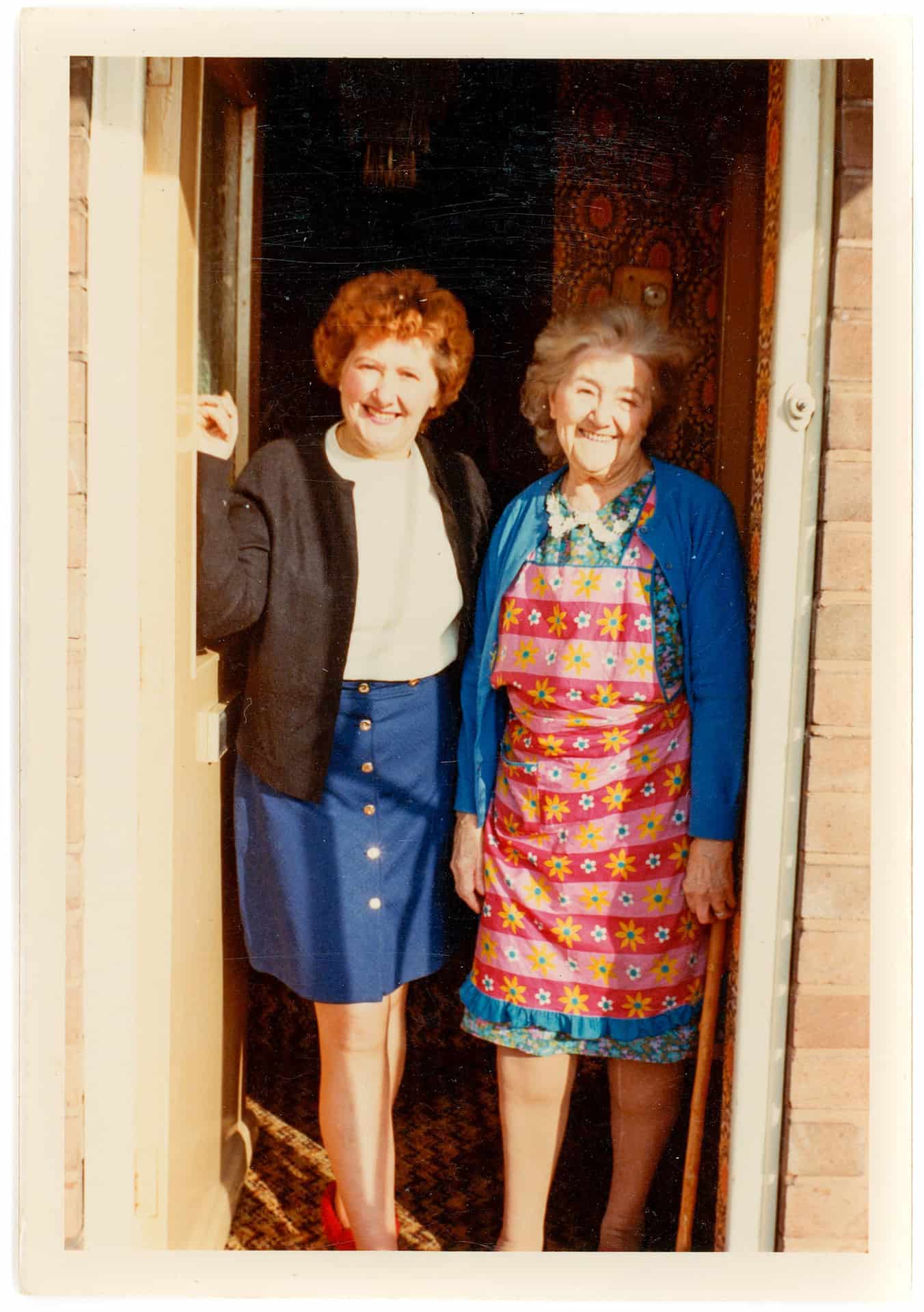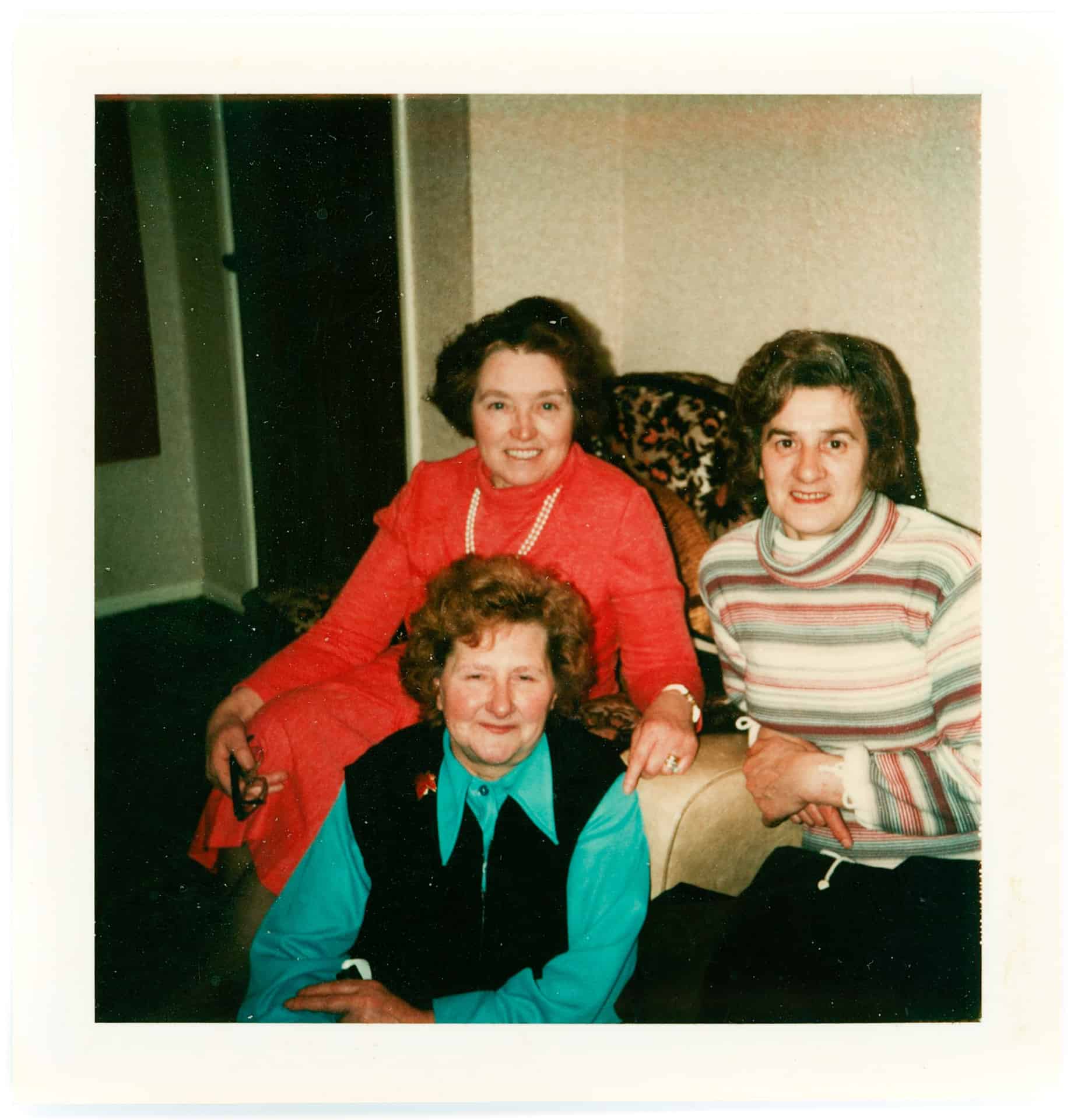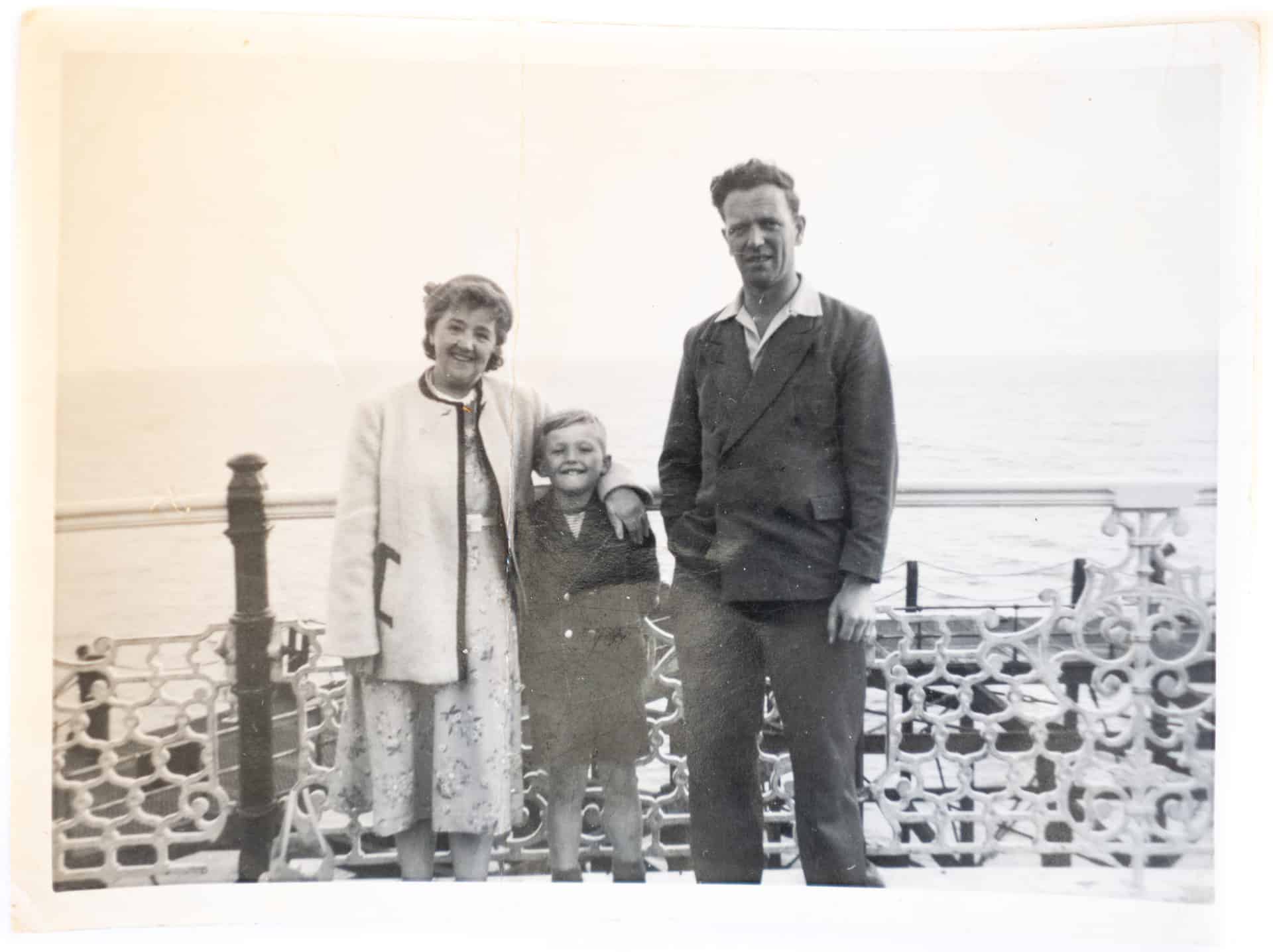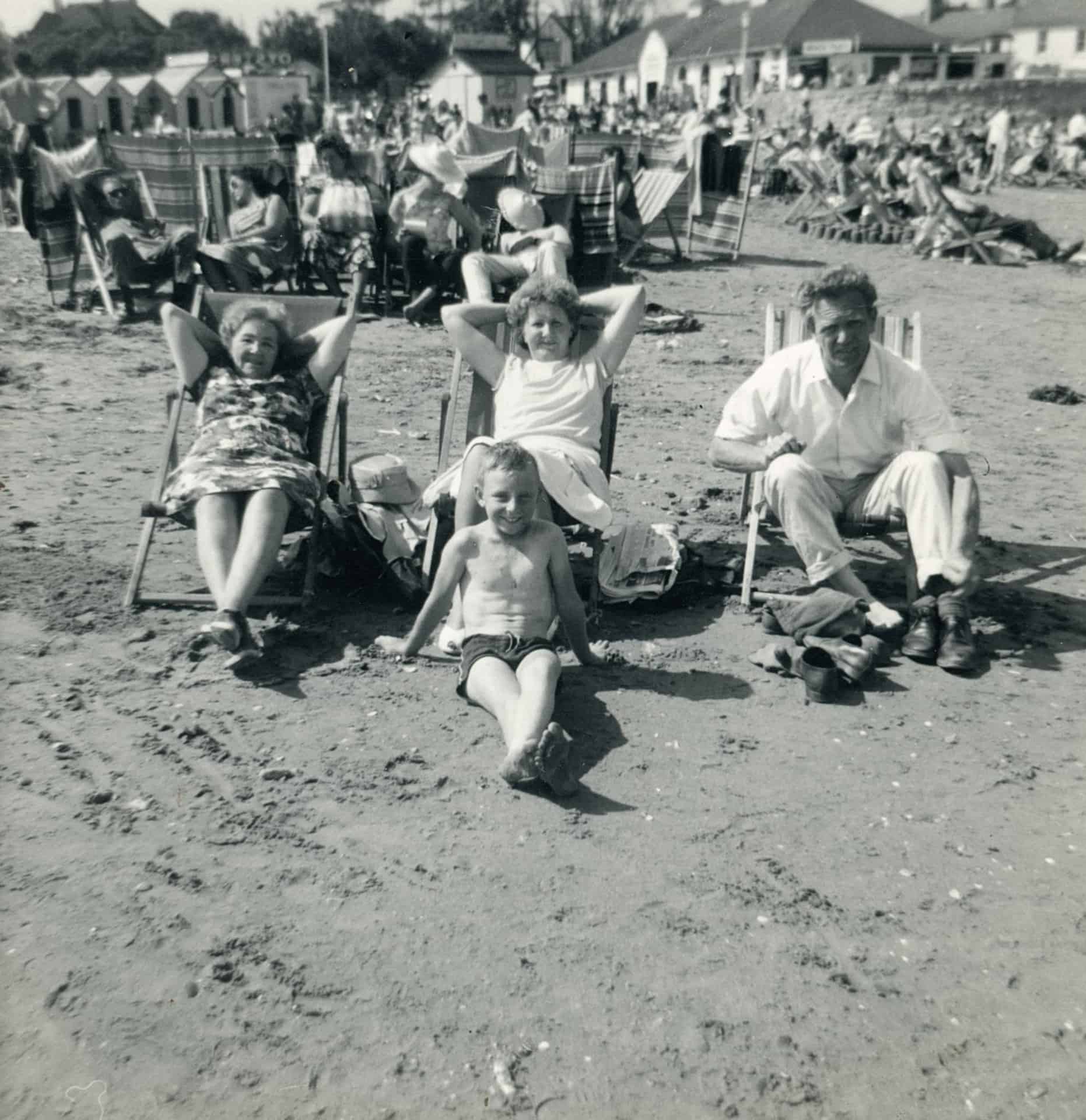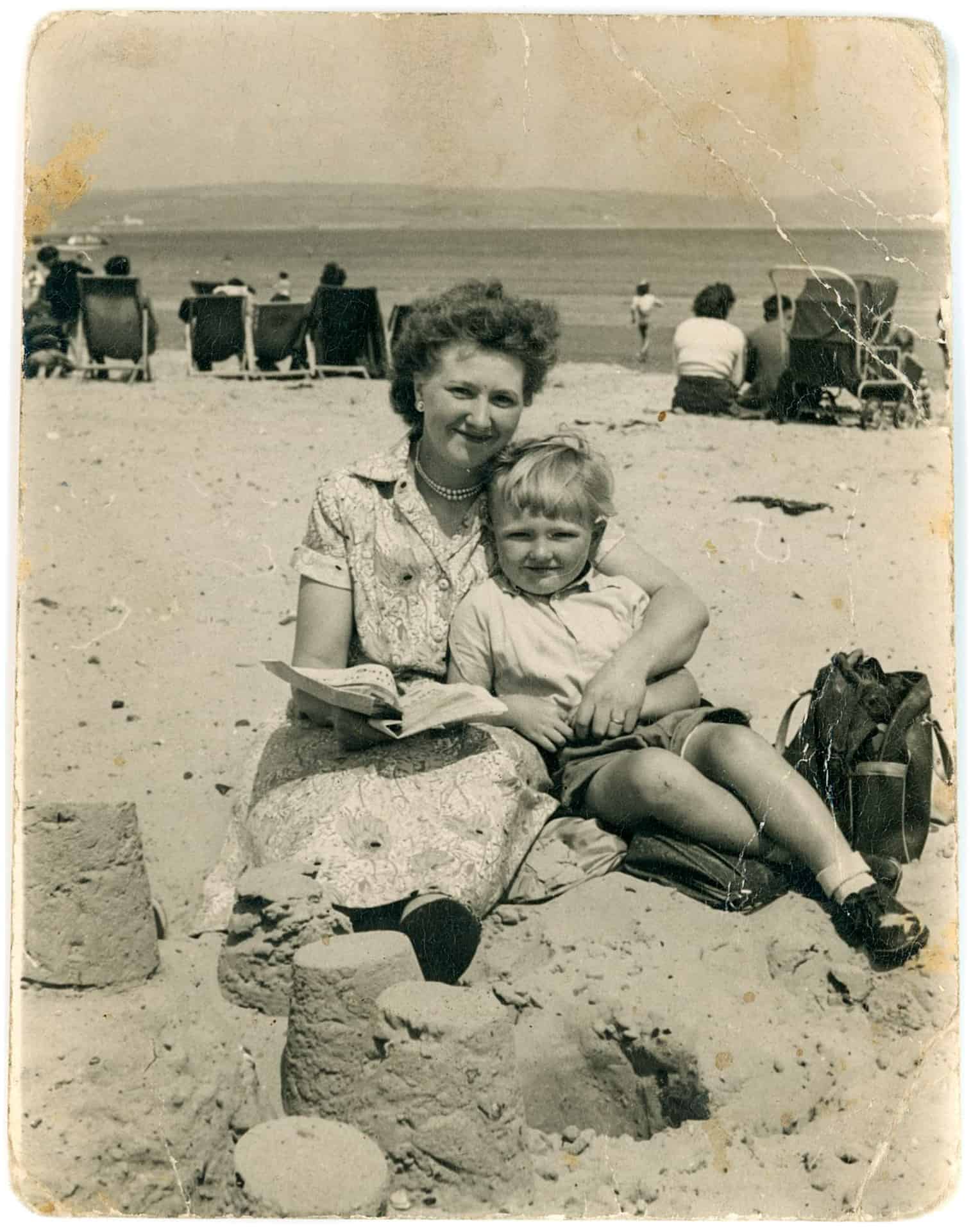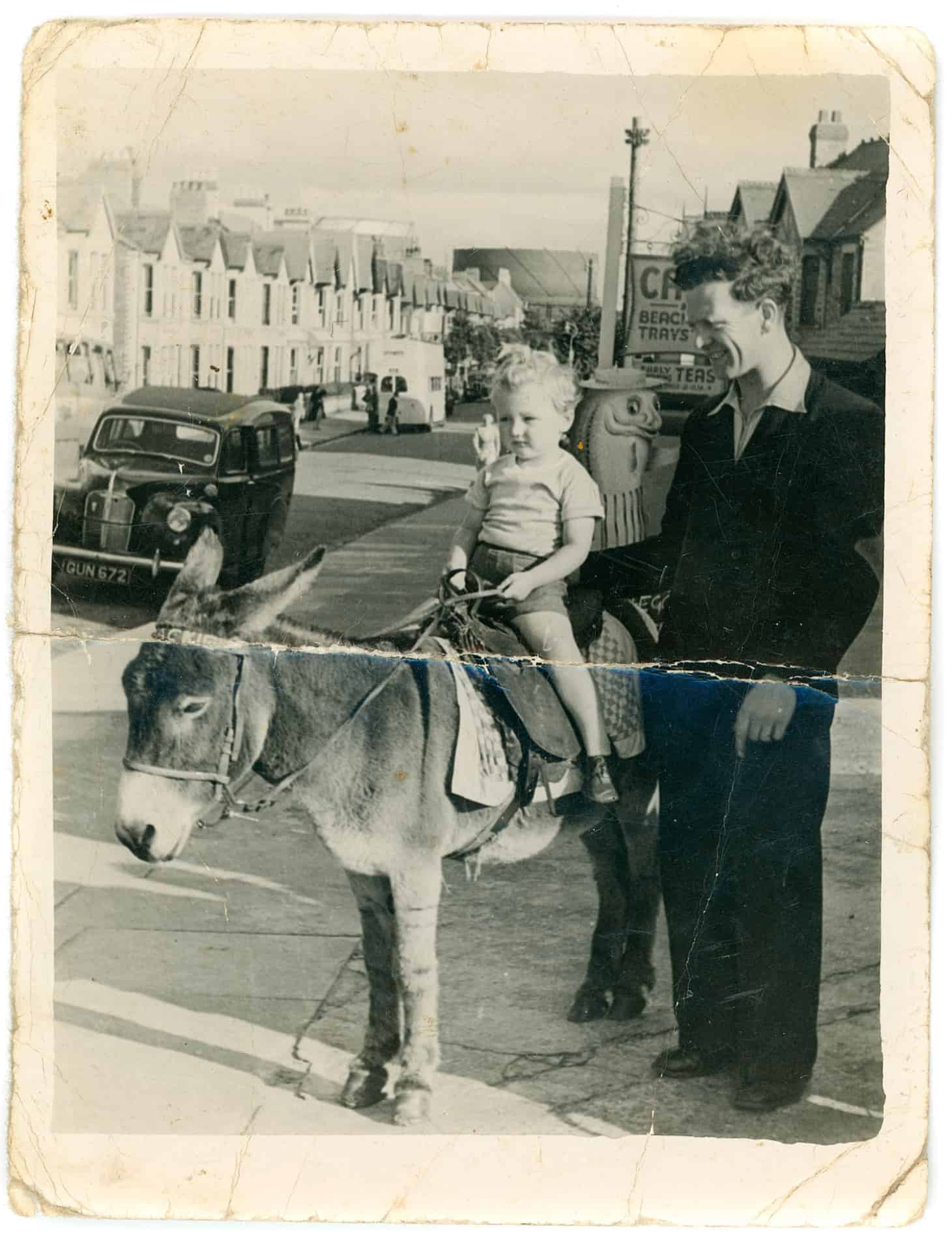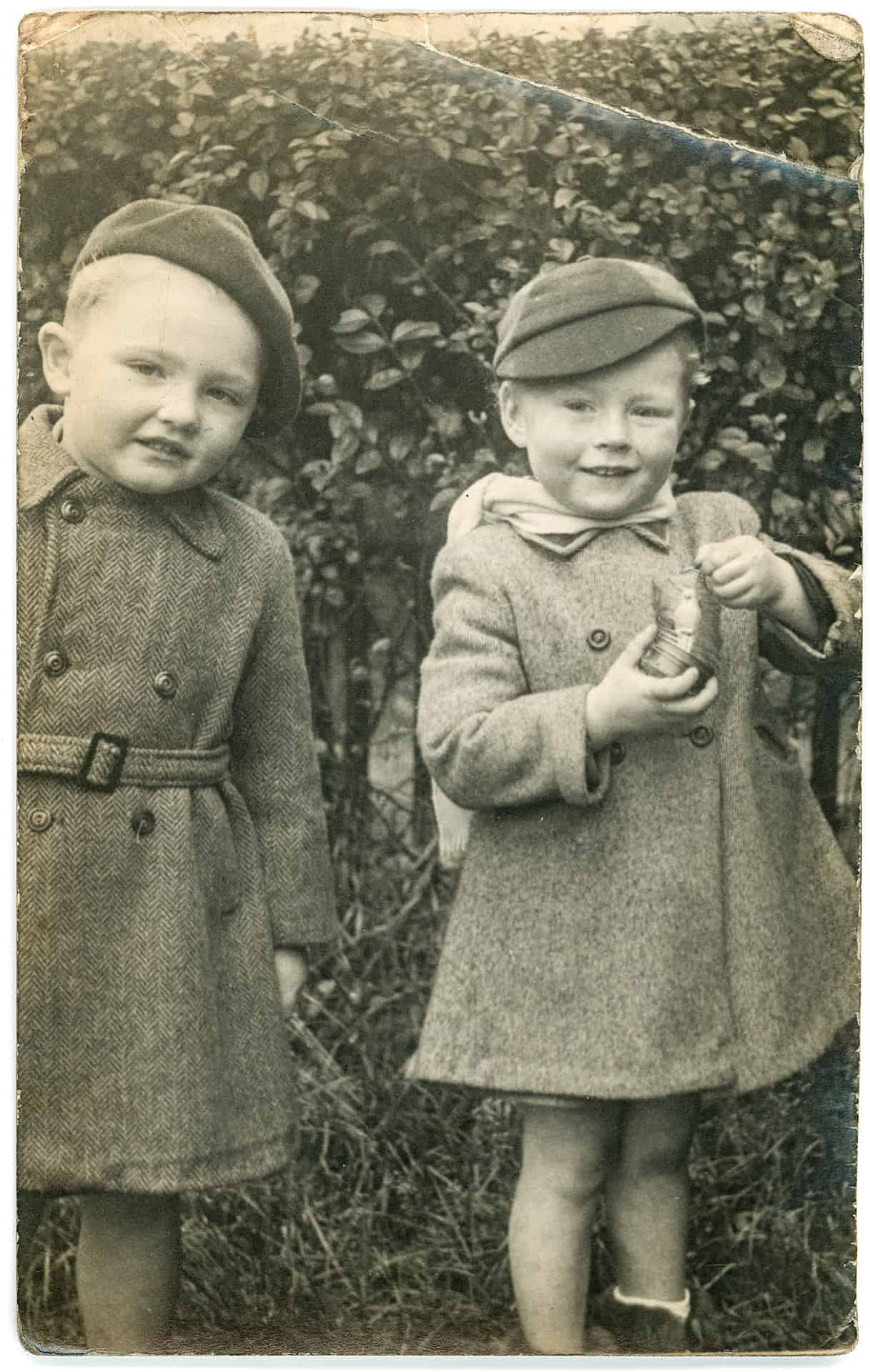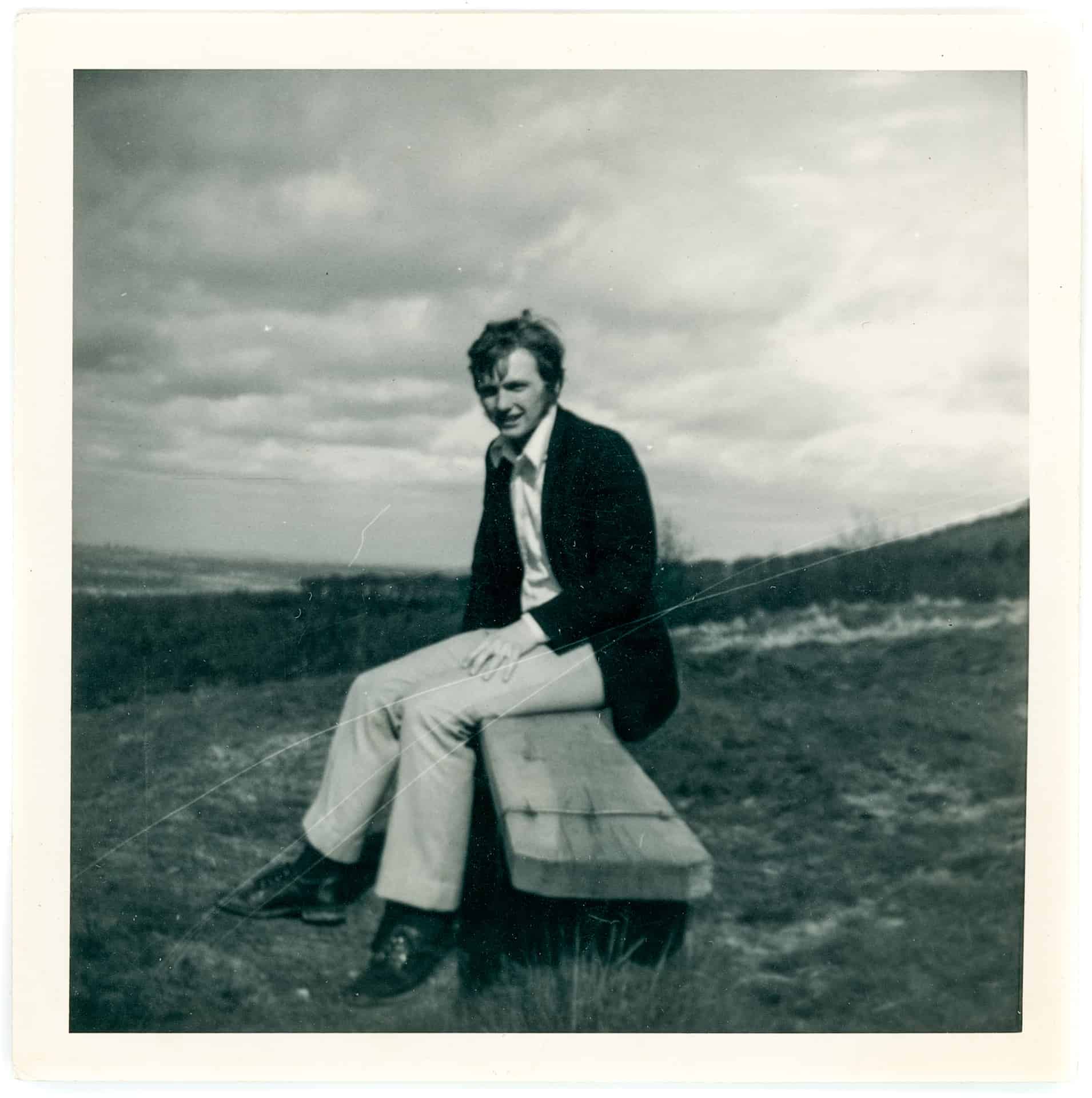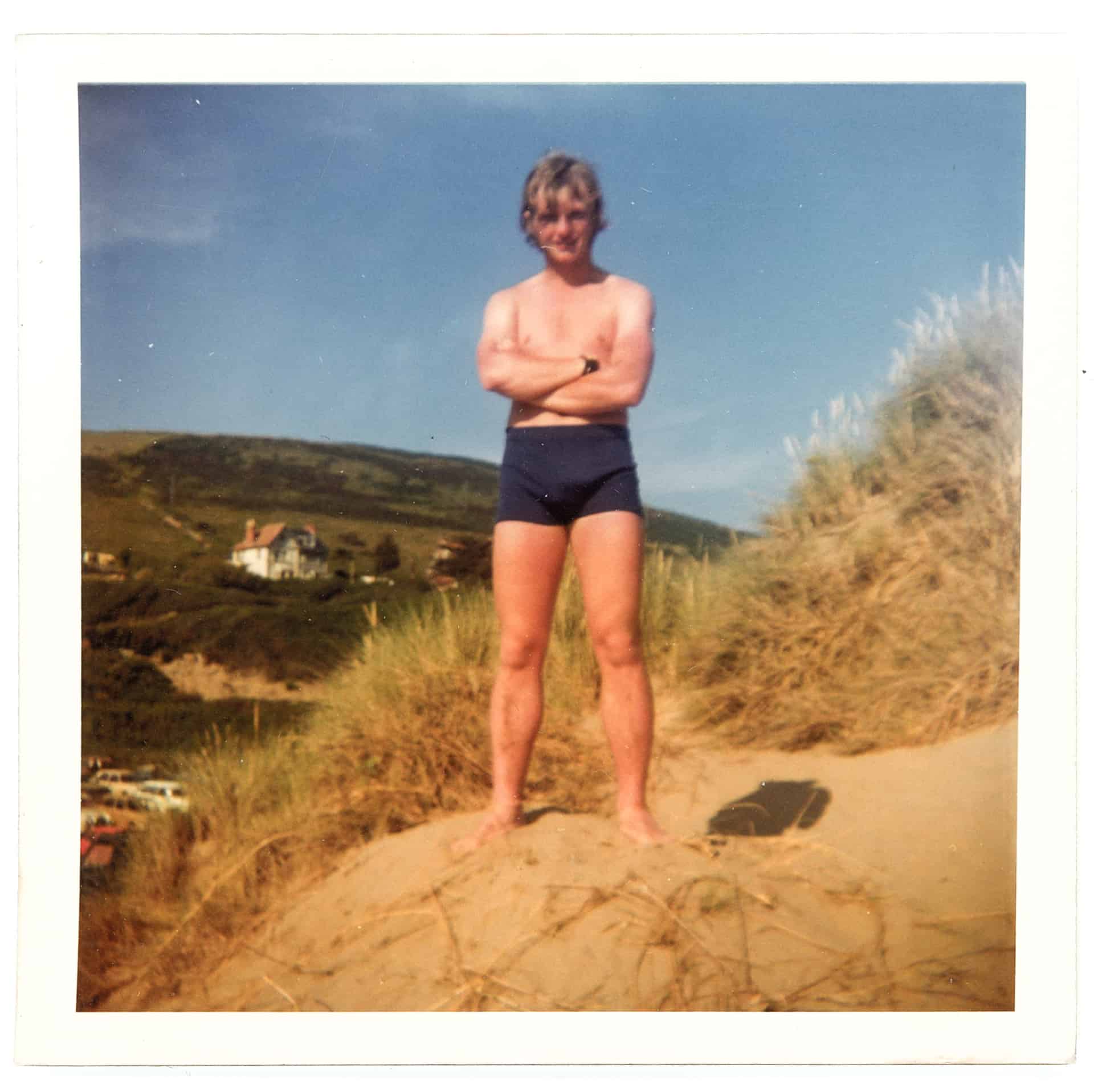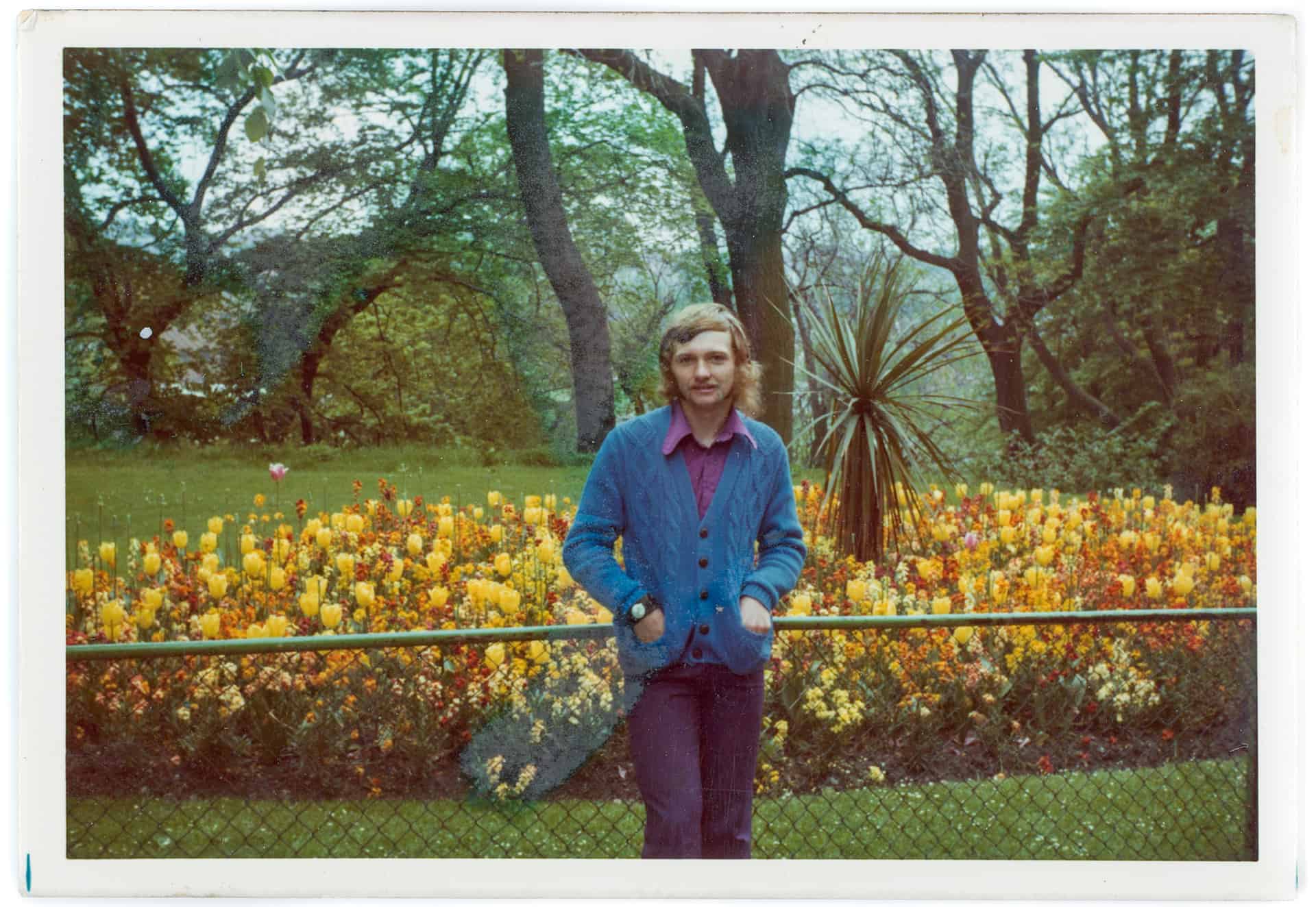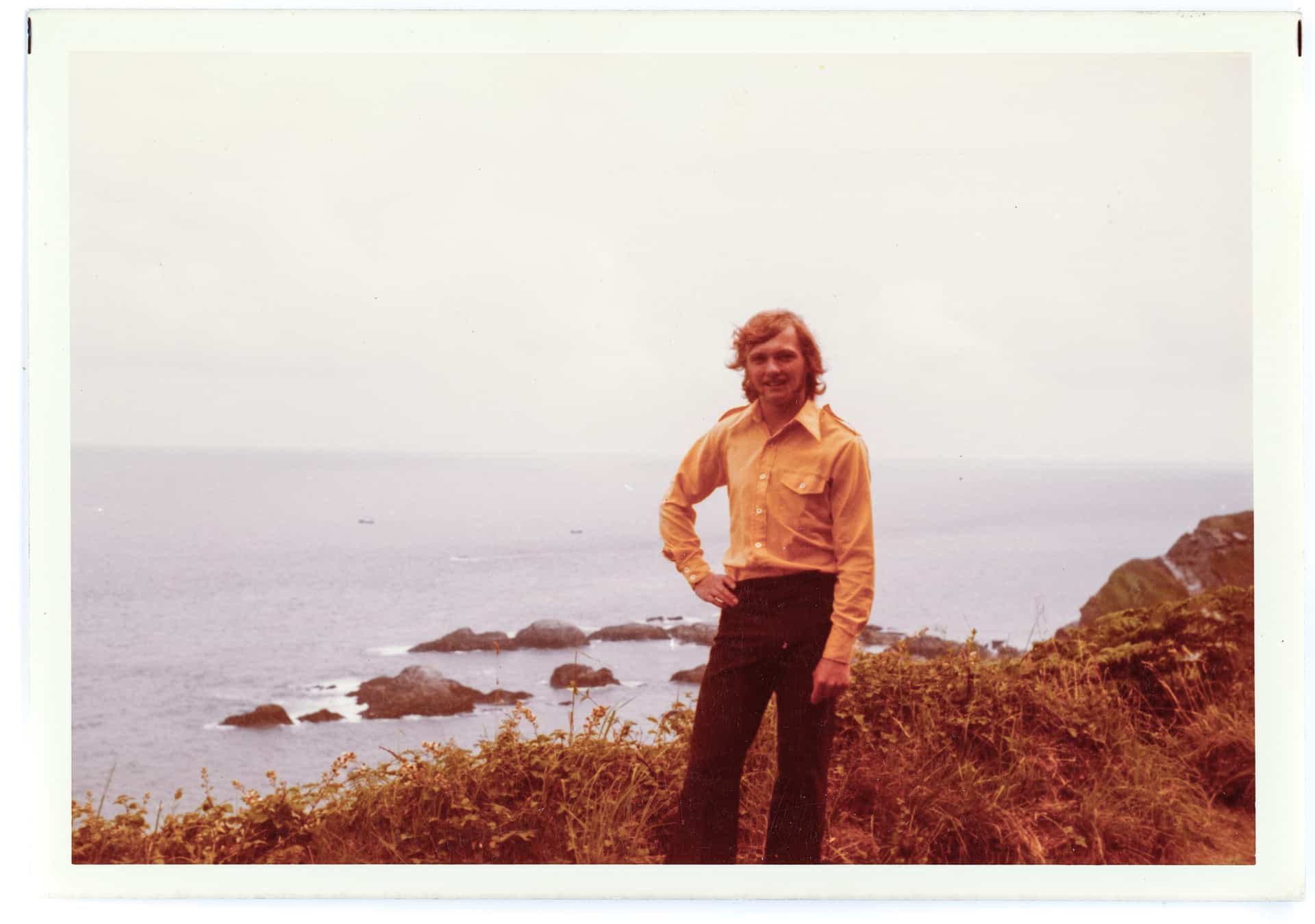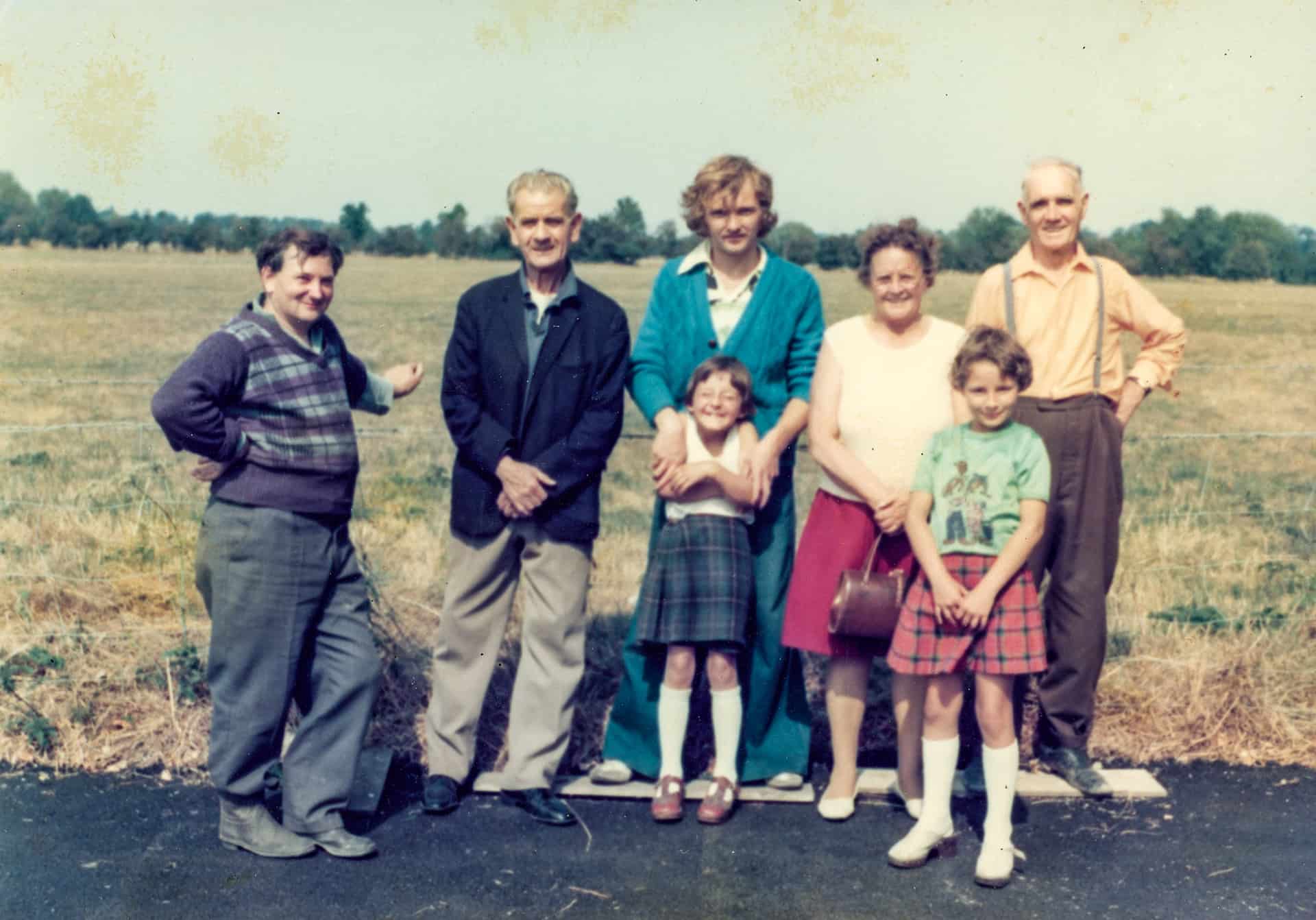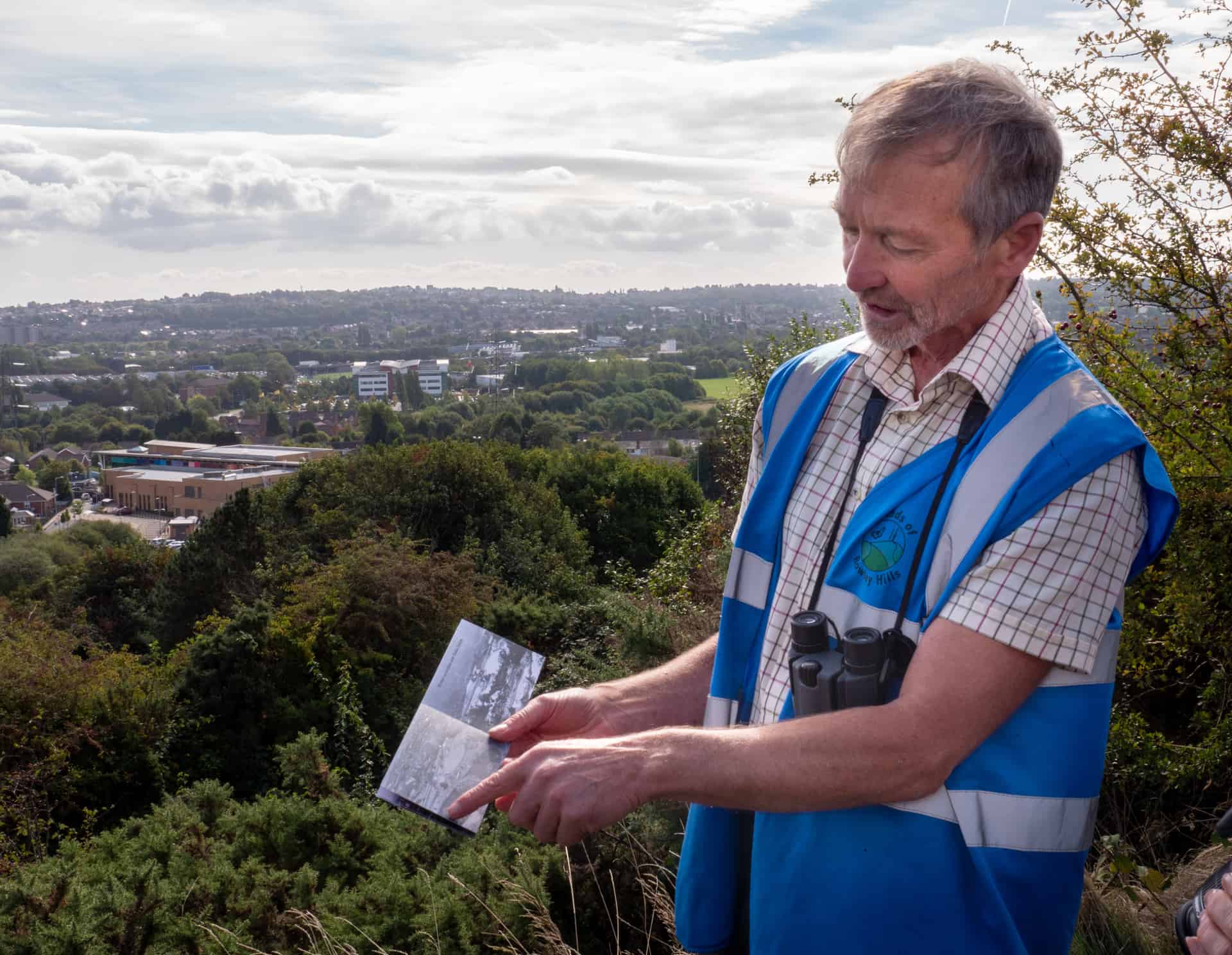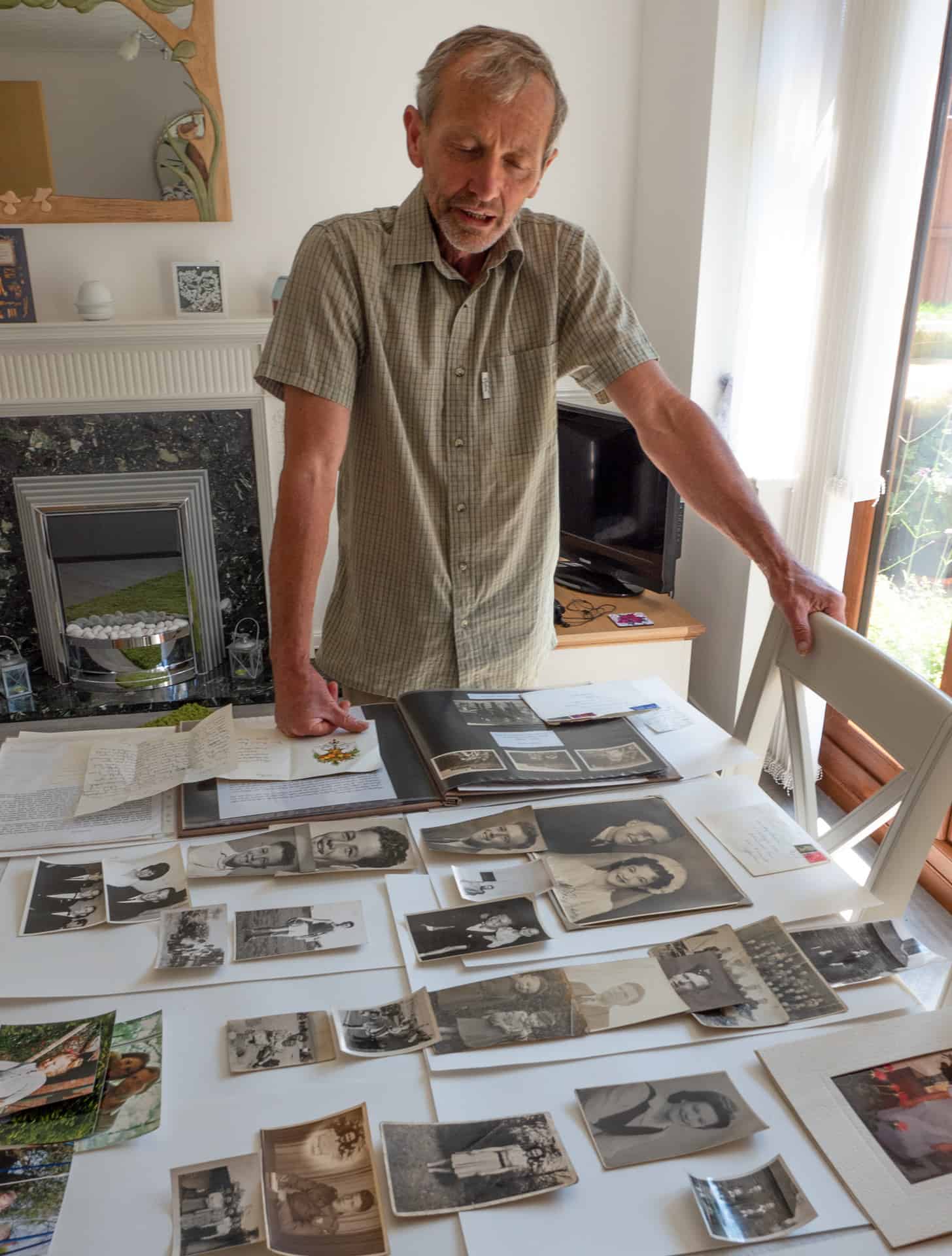Mike Poulton
I was born in Friar Park in 1949, and I lived in Carrington Road with mom, dad, my nan, my Uncle Ron, (that was my Nan's youngest child), and my granddad. I don't remember too much about granddad as he died when I was about five. But nan lived to right up until well into the 1970s. It was an interesting childhood because at that time kids could roam about freely. We had got lots of open spaces. There were little passageways down the back of the houses that we could go and play in. There was what they call the 'sandy banks' just up the road from us, and we used to go over there and gamble about in the vegetation.
As long back as I can remember I'd always had an interest in nature. Mom and dad weren't particularly interested, but I used to look at things like butterflies and birds. And I don't know whether some of it came from my uncle, because he kept birds. He had an aviary, and he kept canaries. Of course, in those days, they used to trap wild birds. He'd got a means of catching things like goldfinches and bullfinches, which were very common. He used to put seed down in the garden, and he had a net propped up with a stick. Attached to the stick was a long piece of string. He'd wait for the birds to congregate underneath, pecking away at the seed, and then he'd just pull the stick away and hopefully he'd catch a bullfinch or a goldfinch.
As a small child, I'd watch him doing this. One day, he was at work, and I thought, "Well, I'll have a go and see if I can catch him something." And I pulled the rope away. I could see all these birds under it, and I caught about, oh, it must have been eight or nine birds underneath this tangled up mess of netting that had fallen on top of them. When he came home, he went absolutely berserk because what I caught was sparrows and in their frantic attempt to get out, they got all tangled up in the netting, and he ended up having to cut it up. So, he wasn't very pleased about that.
This first photo is probably the oldest photograph that we've got. This is my nan, my mom's mom's family. It was the Butler family, and my nan was the youngest of nine. The photograph shows nan in the foreground, and then the mom just behind her, and the brothers and sisters. What does make it very interesting is that the father, that would be my great-granddad, wasn't there at the time. He was conveniently fitted into the photograph.
Nan looked to be around about 10 years old in this photograph, and she was born in 1899. I would think that it was taken around 1909 or 1910. It fascinates me because it's a bygone era. They had obviously all dressed specifically for the photograph. One of the brothers at the back is in uniform so he was obviously in the army. This would have been only a few years before the outbreak of World War I.
This is a photo of grandad with his army uniform on, he would have been very young there. Looking at this, I would say that he couldn't be much older than what, 16, 17 years old. He was a good looking chap. He only lived to the age of 54. He died from, I think he had a heart attack or some heart-related problem. I didn't know much about him, but he would have been the age where he would have gone through the First World War.
This photo may well have been in a frame at some point and taken out of the frame. It's quite worn.
So the next one is a torn off photograph. My aunt on the right, Aunt Irene, and my nan on the left and granddad in the background. Granddad's name was Walter, and my nan's name was Lilly May.
She told me the stories about her early life. Just at the time of the first World War, when she'd been about 14, 15 years old, she worked in the factory in Hockley where they were making bombs or bomb casings. Of course, that was mass production of bomb cases. So, she used to travel down from where she lived down in Great Bridge all the way down to Hockley to work on the factory floor. I believe she told me they used to work at night.
We inherited this photograph when we cleared the house, mom and dad's house. So, we never knew (why it was ripped) and there was nothing written on it. There aren't any other photographs that relate to the same time.
This is a photograph of my mom when she was at school. My mom's name was Nellie.
This is another photograph that we found in the collection that mom and dad had got when we cleared the house out after mom had died. On the back, there's the information saying that was taken at Fisher's Bridge School in 1933 and Nellie's third from the right. Whoever gave her this photograph said, "I have put a cross underneath." It's a postcard, and she may have been given this by someone, one of her school friends, possibly.
Well I don't know what to say about this photo to be honest with you, It's just a completely different world. I don't know if you'd get kids of today posing like that.
On the left is a studio photo of my mom. she was brought up in Friar Park. She worked in the printing trade. She worked at Kendrick & Jefferson's in West Bromwich. That's where she met dad. Eventually they married, and then dad went to live with my Nan and granddad. As it was in those days, they couldn't afford a house; they couldn't buy a house. Of course, it was just before the war. Then dad was enlisted and went off and mom stayed at home.
I think mom there would be in her early 20's in this photo. I'm not a very good judge of guessing people's ages. And, so that would probably have been taken round about early 1940's. I think it was the done thing to at least once in your life to have a professional photograph taken.
The photo on the right is mom and nan. And when you put the two together, they couldn't be more different could they? Well, this photograph is quite unique. There isn't another one anything like this. And it occurs to me that they've dressed up for the occasion. It's not something that they would have normally worn. The uniform that Nan is wearing, is probably too big for her, as is the clothes that mom's got on. It's almost as if they've taken men's clothing here, dressed up in it and had their photograph taken. Because mom's wearing a cap which looks about three sizes too big for her. They're looking very happy and completely carefree.
Mom was exceptionally easy going. She was very, very tolerant. She made friends easily, well both mom and dad did. They had lots of friends. They easily mixed with people. Mom, she was very helpful. She would always help people out wherever she could. So, I've got fond memories of mom and dad. They never interfered with other people. They just got on with their life and they just tried to help other people whenever they could.
This is a photograph taken in Bewdley, at Uncle Tom's. That's Uncle Tom on the right with the cap on. Uncle Tom was one of my Nan’s elder brothers. He's on the first photograph that we talked about. Uncle Tom lived in a black and white cottage up the Wyre Hill in Bewdley with his wife Polly. So what we've got here from left to right - my dad dressed quite smart, then Uncle Ron, and then my Nanny Lil. And then Uncle Tom, and me at the front with the ball. Every now and again we would go down on a visit.
I used to love going down there because Uncle Tom had got a large orchard and a lot of land at the back of his house. And it was a great place for a young child to explore. And this photograph, was on one of these occasions when we went down to visit him and he took us around the back garden. I suppose I could say that partly my interest in plants and wildflowers come from visiting ‘Uncle Tom's Cabin’ as we used to call it. Because he used to grow all sorts of things in the garden. And he knew I was developing a bit of an interest in plants and gardening and he says, "So I'll give you some of that" and "I'll give you some of that." And I'd come back with a big clump of forget-me-nots or bluebells or something that he got.
Every year we’d set off in dad’s car to Rhyl, Brean, Weston-super-Mare or very occasionally Weymouth for our annual summer holidays. We would always take Nan with us. That went without question. We never left her at home. We used to go either to Brean or Weston-super-Mare, and very occasionally for adventures, we might do Weymouth.
But the holidays that I mainly remember are the ones that we had at Rhyl. We used to stay in one of the enormous, great caravan sites between Rhyl and Prestatyn. We would have a caravan for a week and just spend time sitting there on the beach as hundreds and hundreds of other people did, all popping into Rhyl and walking around and going around the fair. They were great holidays. I remember we used to always rent these cycles that you could go around on that would seat about four people.
The photo on the left is me sitting on the beach while mum's reading and is probably taken in Weston, because in the background it looks like there could be the promontory that sticks out from Brean Downs.
We traditionally took the bucket and spade and made sand castles. And everyone would be sitting there in the deck chairs, hoping for some decent weather. You didn't always get good weather when you went down there.
I think this was the forerunner to people going on holiday abroad which then was quite a luxury. Now with package holidays, you can just go anywhere you like. But in those days, it was mainly a holiday in this country. I would call this a working-class holiday. That just about sums it up. A week in Rhyl or Weston, spend a sunny day sitting on the deck chairs on the beach and spend the wet days walking around the shops. And that was something I just got used to, and it was right from when I was tiny right up until I reached my teens, then obviously didn't wanna go sit on the beach. There were other things on my mind then.
This is a photo of me and my friend Phillip Hodgkinson who is holding a little cage with a birdie. I don't know whether that was a real bird or whether it was just a toy that he'd got.
Right from a young age, us kids were fascinated by water. There were lots of places near to us - ponds, streams, the canal. Philip and I used to play together all the time, he was one of my best friends. And then suddenly he wasn't there. And I found out that he'd gone off to the canal on his own or with others of the same age and he'd fallen into the canal and drowned. At that time it was very distressing for everybody.
Of course after that we literally had the fear of God put into us, you know. "Don't you ever go near the canal, never go there on your own" and all that. But it was something that happened. In those days, kids used to go off playing on their own. And, of course, being so small, if you fell into the canal, you've got absolutely no chance of getting out because you couldn't even grab ahold of the top of the brickwork. And he drowned and he couldn't have been five or six when he died.
When I got older I passed my 11 plus and went to the grammar school. I left grammar school in 1965 and my first job was a furniture salesman in West Bromwich, a place called Pawson’s Furniture Store. I didn't stay there too long because I then set off and did a summer season working in a hotel in Woolacombe in North Devon called Coombes Hotel That was fantastic. That was like one big long holiday. But of course, it didn't last. And at the end of the season, I came back and I had to find a job. And I thought, well, I have to get a career. So Dad says, "Why don't you go down the same line as me." That was as a dye stamper in the printing trade. I enrolled in an apprenticeship at the place where he worked. He asked if I could be 'took on' as an apprentice and they accepted me. And so I did an apprenticeship at the small company over in Shirley, near Solihull as a dye stamper. But unfortunately, the job came to an end because the place closed down. So once again I was out of work. This would've been the late 1960's, round about 1970.
From there I worked as a baker’s roundsman for Wilson’s Bakery in West Bromwich delivering bread and cakes to people’s houses. My uncle John was working there at the time and he told me there were jobs going so I just went along and applied. In those days it wasn’t a formal interview, you just went along and said, "I'd love to come and work here, are there any jobs going?” If there were, they would say, "Well, when can you start?" There wasn't much to getting work in those days. There were many jobs around. Now, they seem to be few and far between.
I worked at a couple of other places after that. one was Smith-Corona making typewriters on the assembly line. From there I managed to double my income overnight after a successful interview at the Birmid working in the core shop. I stayed there up until the place closed down. Once again, I was made redundant. In fact, the whole of the Birmid complex closed down in the 1970s with the loss of in the region of about 4,500 jobs. When you think just how many people were employed in the car industry making engine parts and it just went, the whole lot went.
Probably of all the places where I ever worked, Simplex Power Centre in Oldbury had got the best comraderies. We had some fantastic times there. It was part of the TI group and at that time the TI Club on Broadwell Road was still there. There was a dance hall. They used to have regular dances there on a Friday and Saturday night. There was a snooker room, there was a games room and beneath the dance hall was three 9-pin skittle alleys. And working at Simplex, we had access to all of these facilities. I joined the football team. I played for the works football team. And also I formed a skittle team and I got a group of workmates to make the team up. And we had quite a successful skittle team. And we used to go down there once a week, play in the league.
At that time working at Simplex, there were probably 400 or 500 people altogether and I would say that it was a 50/50 mix of mainly white people and Asian people and just one or two West Indie's people. But it was at a time when there was a big influx of Asians into the area. I worked with a lot of them and they were great. In fact, we formed a stronger bond with the Asians that worked there than perhaps we did with the white people, and we managed to get a really good strong team going.
It was a terrible loss to lose the TI club because it was a focal point for people who lived in Smethwick and Oldbury. They used to flock there and had many famous people perform in the club, in the dance halls. It was an absolutely brilliant time. It was so sad to lose the skittle alleys.
The way work changed so much during the latter part of the 20th century was unbelievable. Because we went from an area that used to have enormous great works employing thousands of people, factories and foundries everywhere and we've gone now to small units. That's all you see now. You're lucky if you've got a place that employs more than about 60-80 people. And yet, back in my working days, earlier working days, there were foundries and factories and there were literally thousands of people there. They would work in shifts, three shifts, mornings, afternoons and nights. And it does make you wonder where all of these people found employment once these enormous factories and foundries had gone.
This photo was taken at the time when I worked at the Simplex. It was a good time. I've got all sorts of interests and as a result of that, I mixed with a lot of people. And this is just one example.
So we also had a fishing club and we used to arrange competitions, and we'd set off to our fishing venue and then we'd have a set number of hours to fish. And then once we'd reached the finishing time, we would then weigh-in and the one who caught the heaviest weight in fish would be the winner.
It was open to people from outside, not just people who worked at Simplex. And this photograph is, I'd invited along my friend there on the left who was a bit of a fisherman. And then next to me, is the family of my mate who I worked with. He must've taken the photograph because these are his two kids, the one standing in front of me and the one to the right and that's his mom and dad on my left.
This photograph was what I supposed you could call the end result from all the work that we did to reach the point where the book the "Flora of Birmingham and Black Country" was published. We had a walk around Sandwell Valley inviting everyone who'd been involved in any way and we took this photograph as a commemorative photograph.
The way it all started was my interest in wildflowers growing up and I became quite an expert I was approached by Professor Ian Trueman of Wolverhampton University, who conceived the idea that we should do "Flora of Birmingham and Black Country." And little did I realize just how much we'd be involved in actually bringing this to the point where we've got the book. It took 15 years travelling around the whole of Birmingham and the Black Country collecting the records until eventually we more or less covered the whole area and we thought we'd got sufficient information to be able to compile the book.
Well, I think that the Black Country can really have a bad press. People outside of the area think that there's nothing there, that it's not a very desirable place to go. And yet, true Black Country people know differently. We've got an amazing amount of interest in the Black Country through our industrial past. It's just an absolutely fascinating area. The more you delve into it, the more you realize just how fascinating it is.
From the natural history point of view, what makes the Black Country and Birmingham particularly interesting to me, is that none of it has been untouched by man. It's all artificial. It's what has evolved from the man's interference. For example, all of the areas around here that were quarried and then subsequently landfilled. They're now green open spaces. Now, had we not have had that quarrying in the first place, we would have probably lost all of these pieces of land to building. But because they were there, and then they were landfilled, it makes the site basically an area where you can't build on it. So it becomes a green open space. And these are the places where nature has taken back. It's just a really fascinating area.
Well, I suppose when I look back at these photographs from when I was a child and to where we're at this present time I realized just what drastic changes have taken place in just my lifetime. Absolutely unbelievable. When I was a child television was a relatively new thing. If you even had a TV you were very fortunate. We had a small set and I can remember mom coming home with a length of Cellophane paper that was blue in the top third, brown in the middle and green in the bottom third. This was then taped across the television screen to give the impression that we had a coloured television (only the very wealthy had colour in those days). The lengths people would go to get one up on the neighbours! Now things that were then unheard of are now just commonplace. And the way technology has moved forward - in my life, we've moved forward at an absolutely alarming pace. I don't think there's another generation that could've experienced where we've gone from in such a small space of time.
I've always had the philosophy that as you go through your life, you're forever reaching points where you can go one way or the other. I've also always thought that once you've made that decision where you're gonna go, you don't look back. I've done such a lot of things in my life. I never went to university, but I think I went to what you'd call the university of life. I've done so many different things and they've all been experiences. Some of them are better than others, they've all been life's experiences. I've got no regrets about that.
You can read the story of Mike's dad and his experiences of World War 11 here on the Living Memory website
